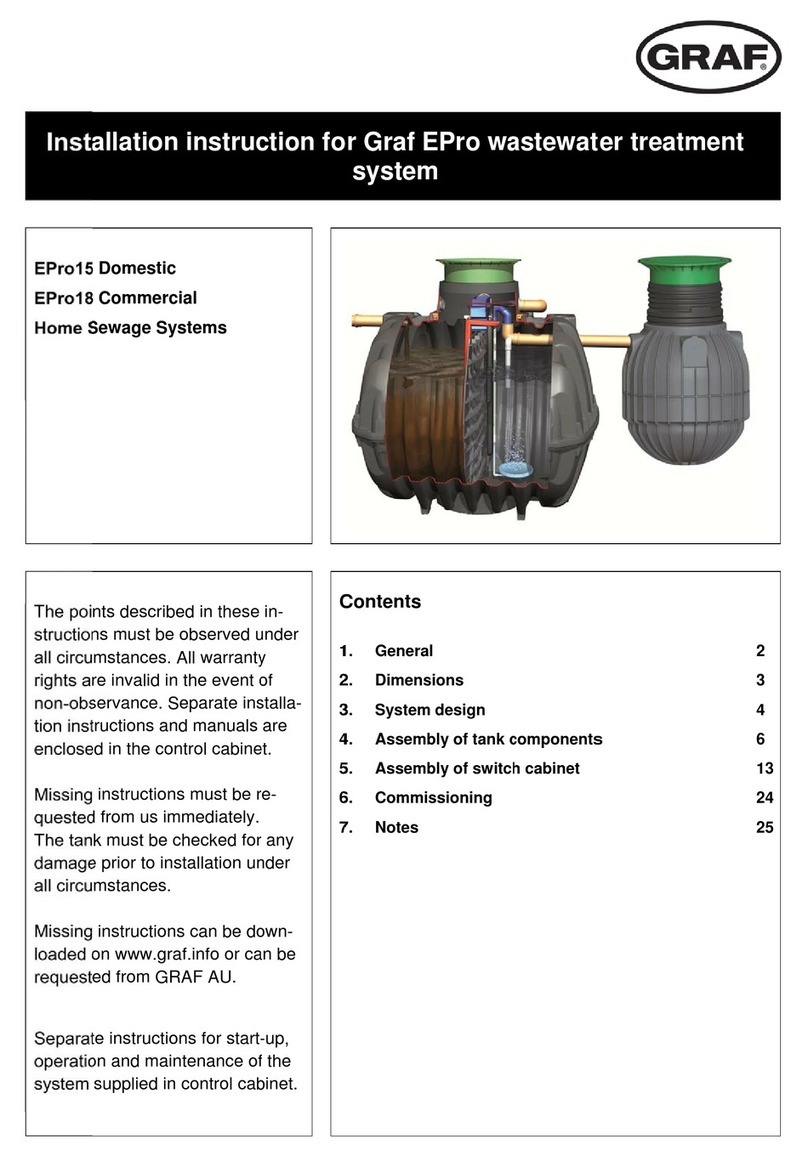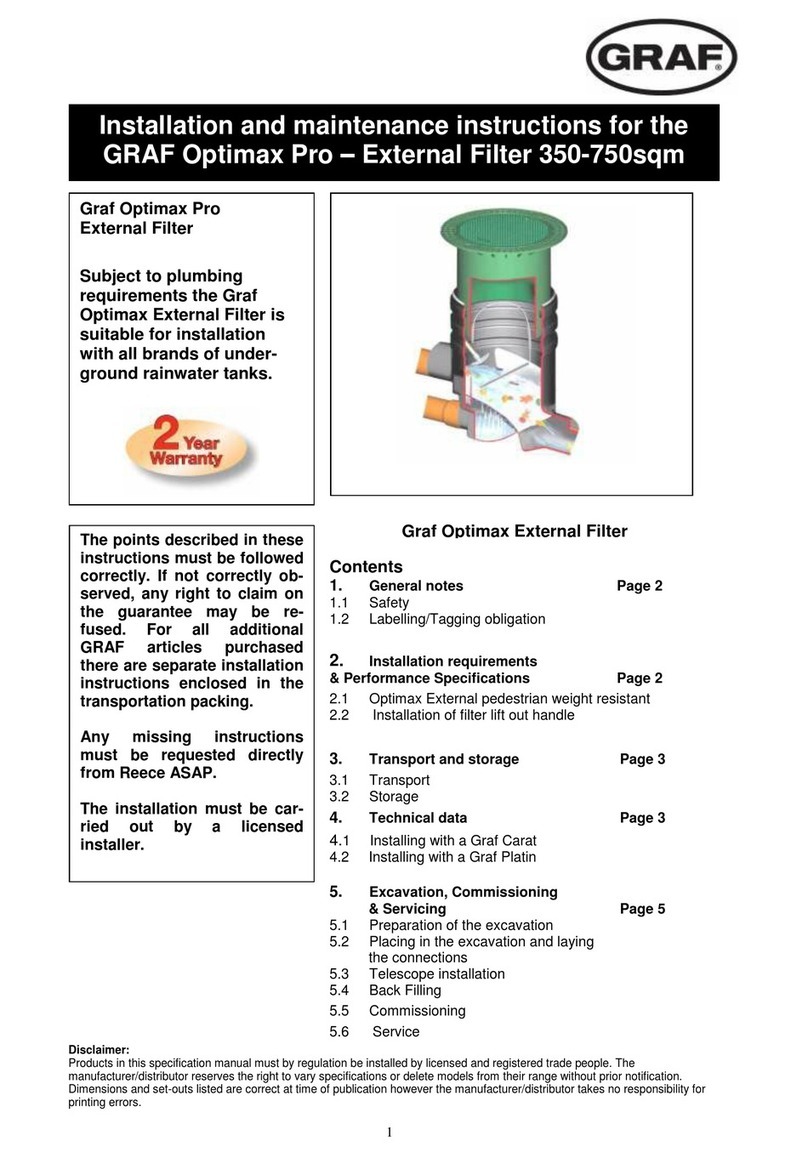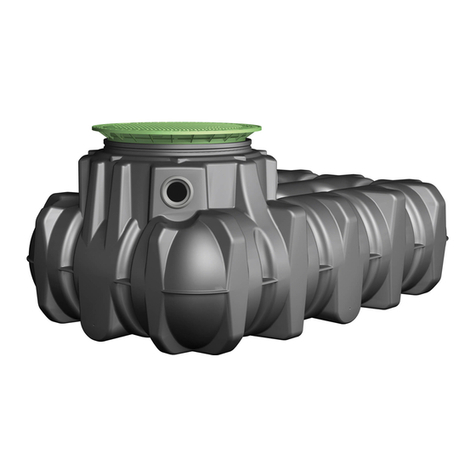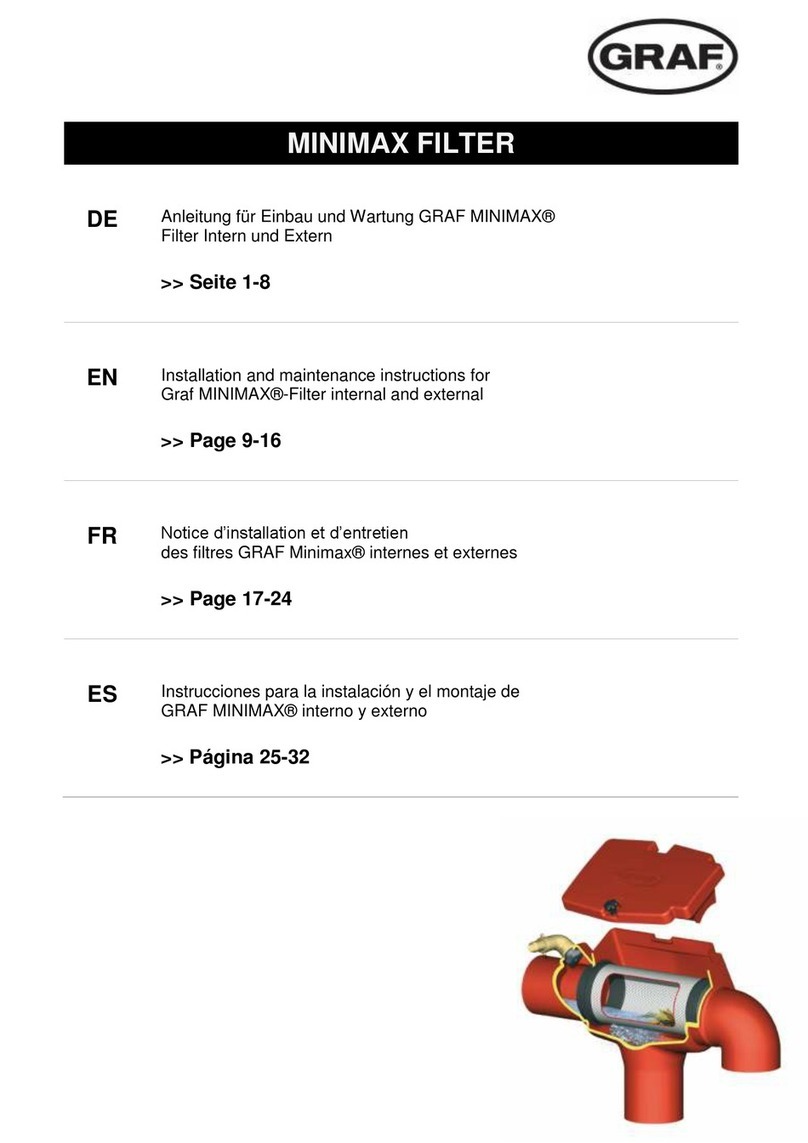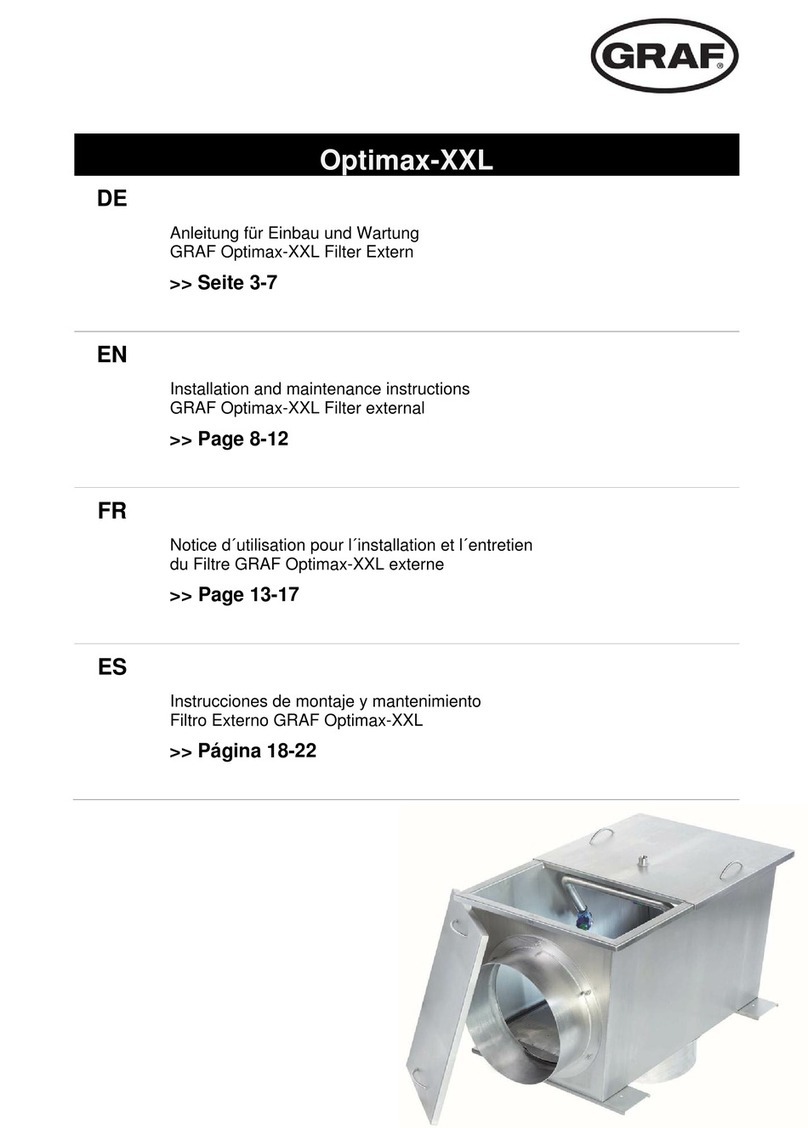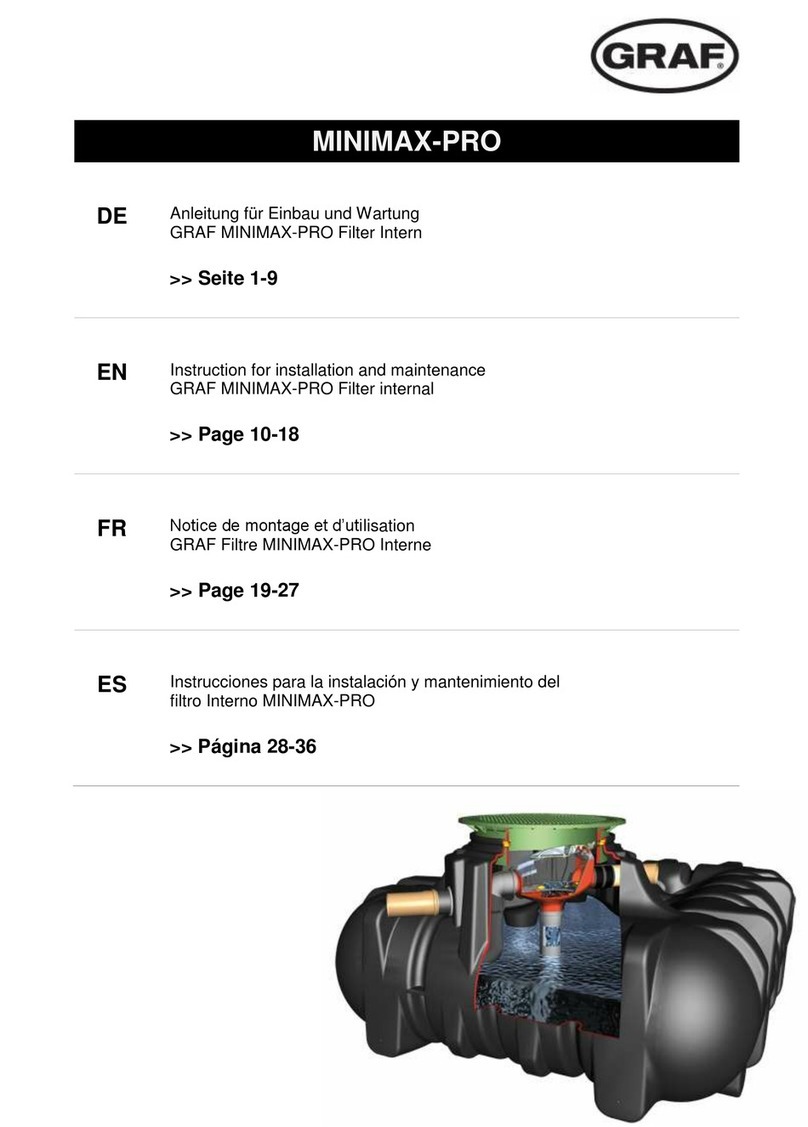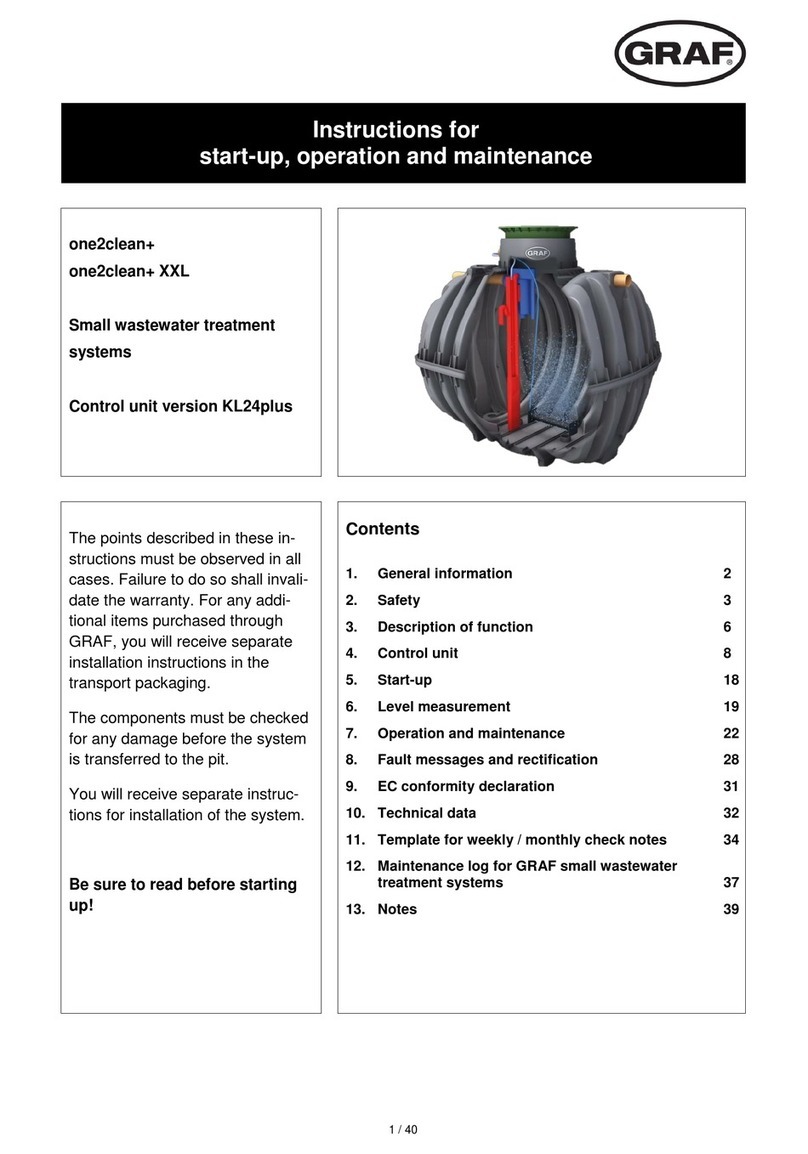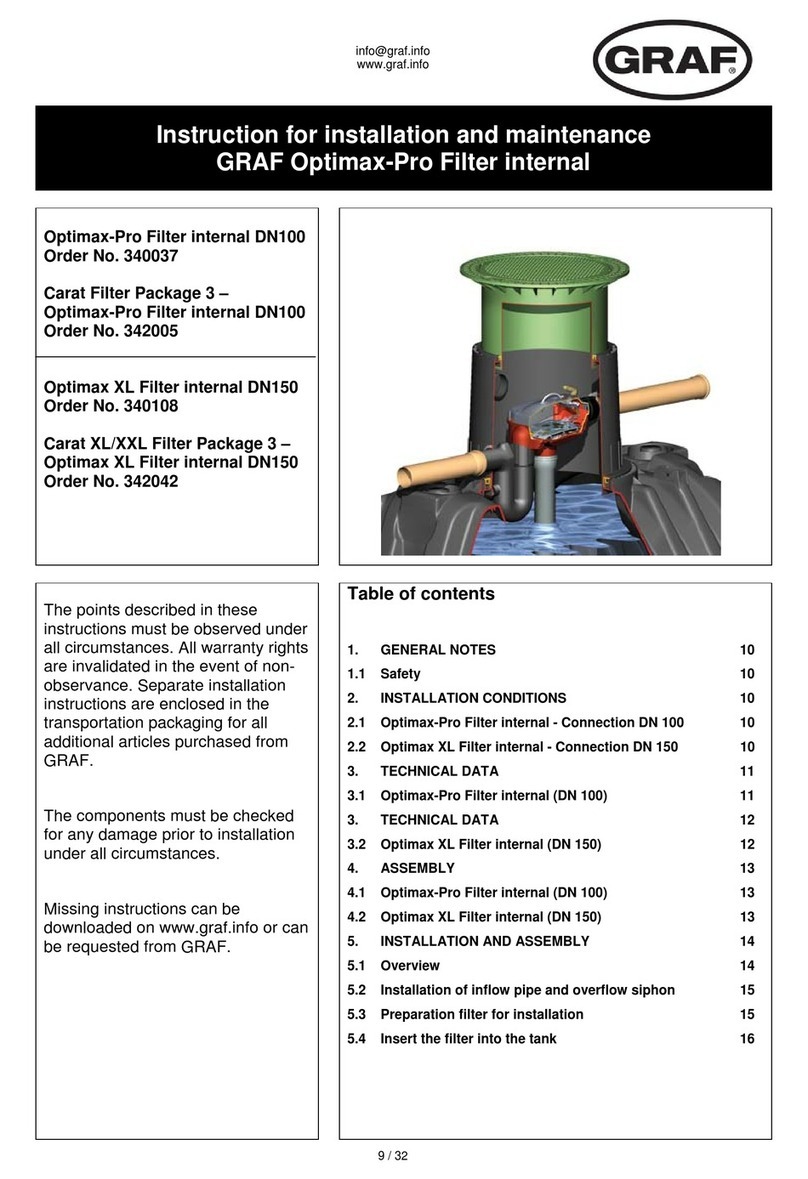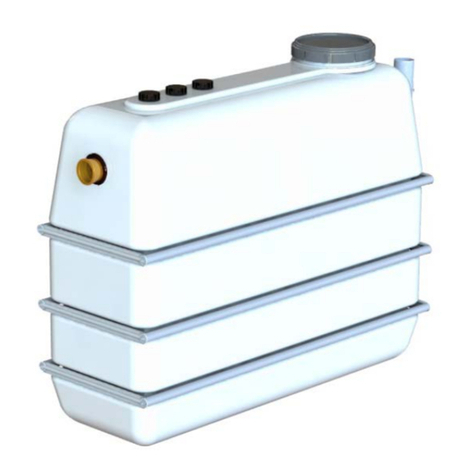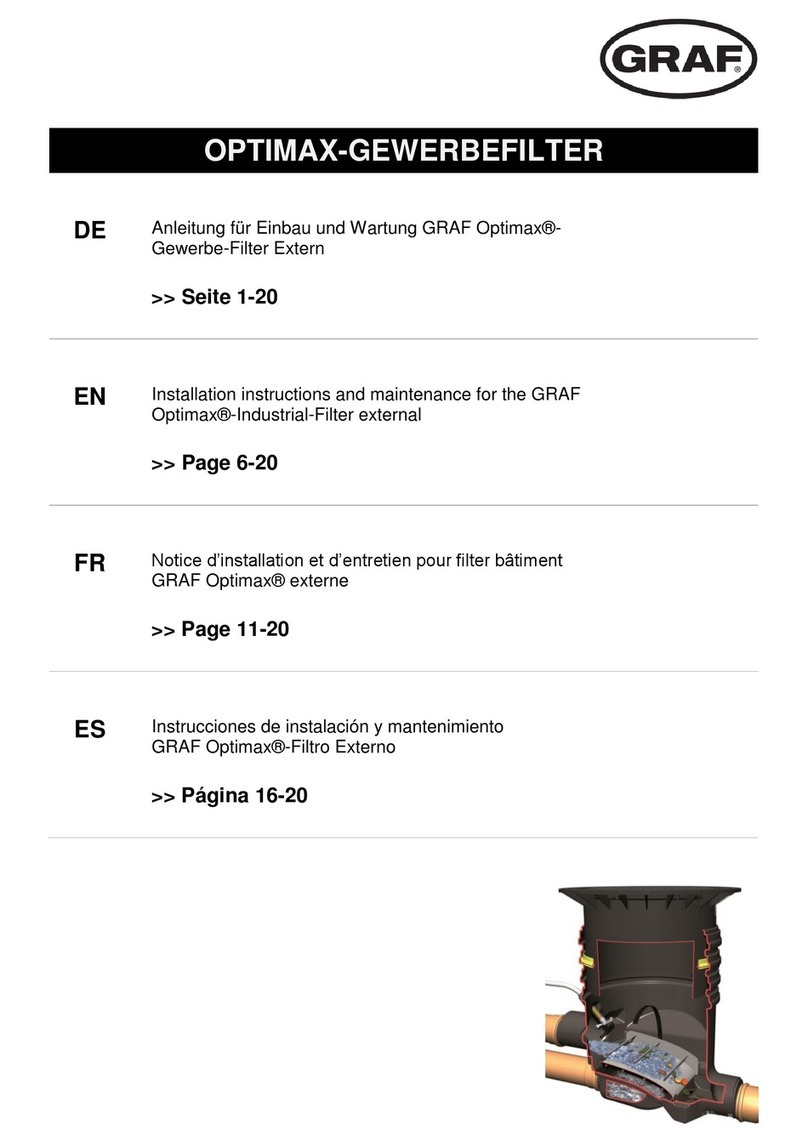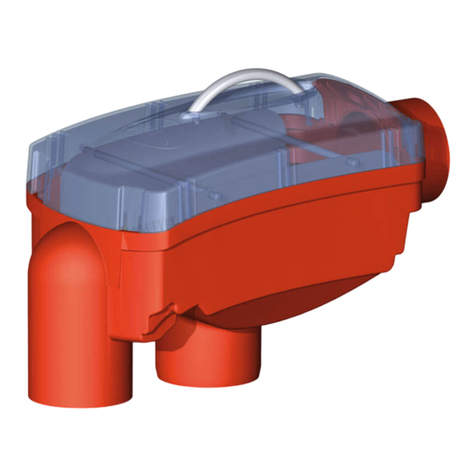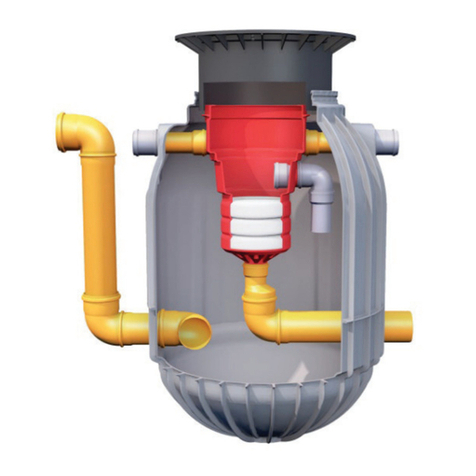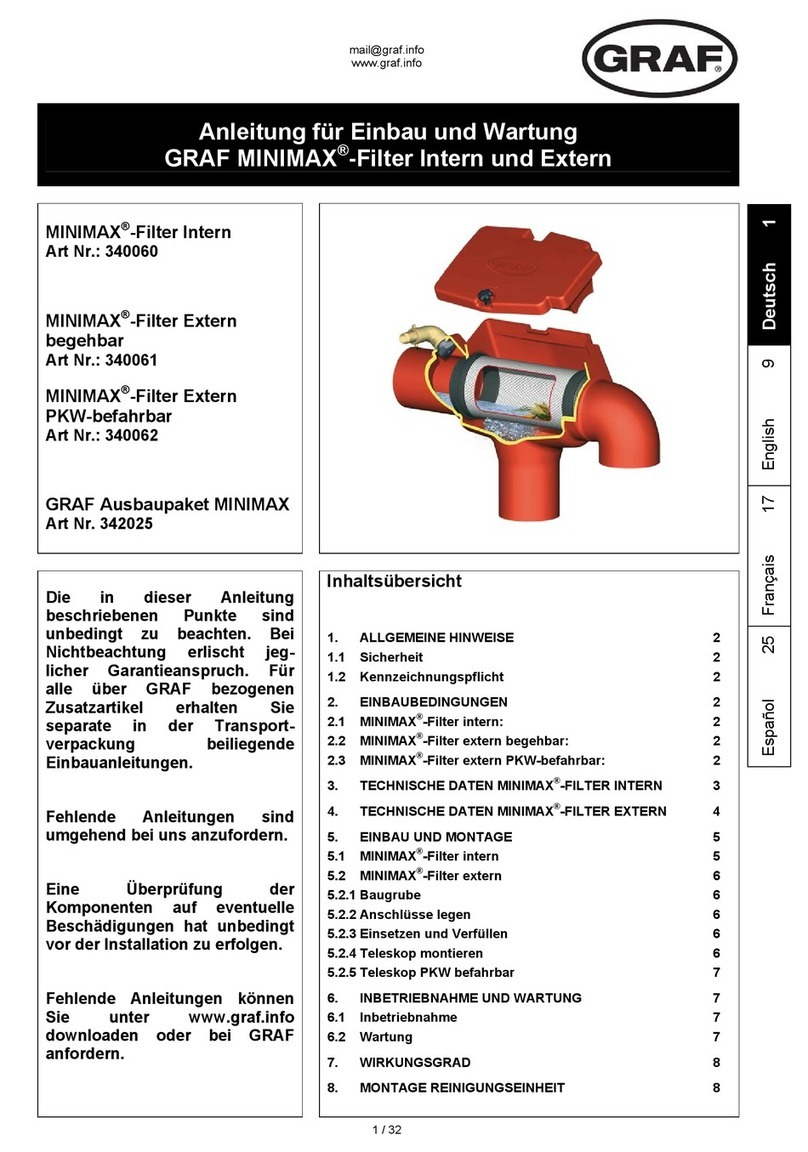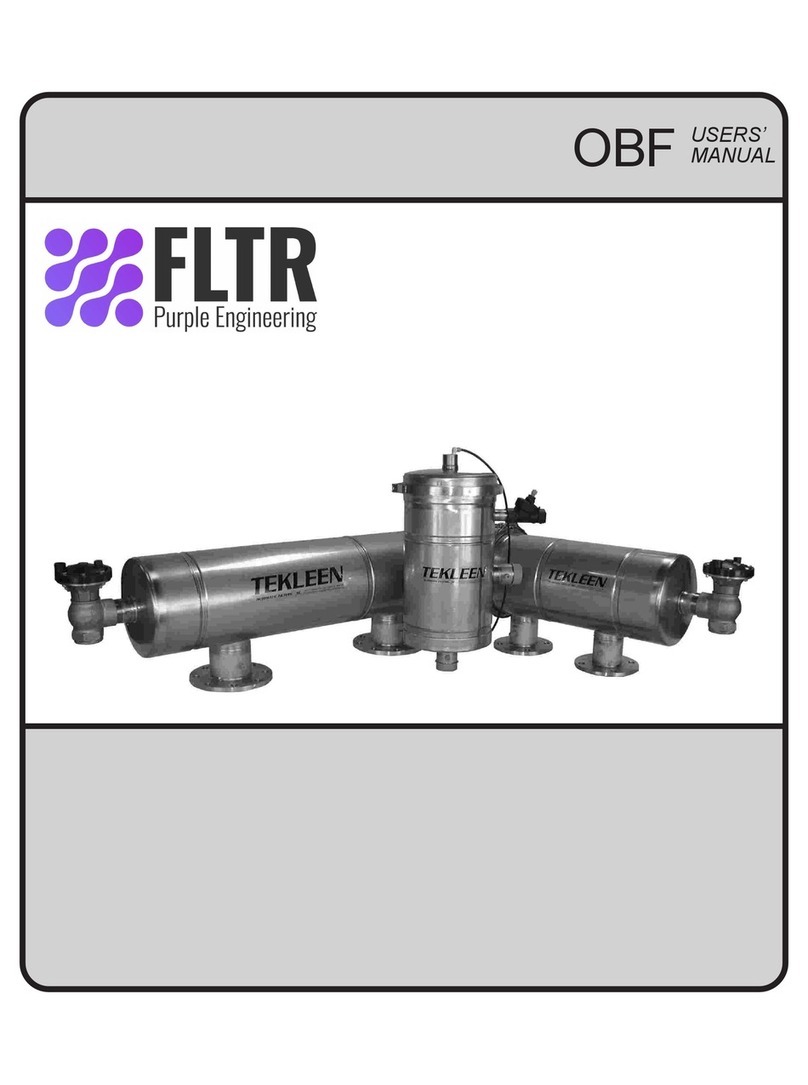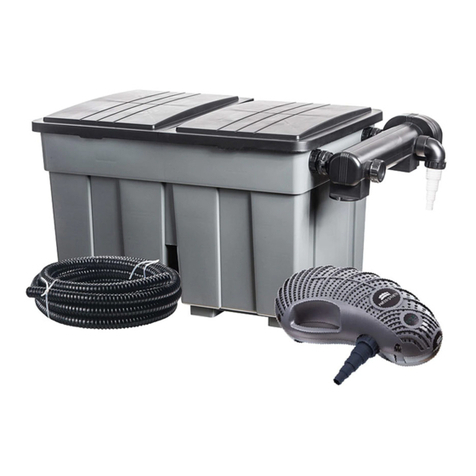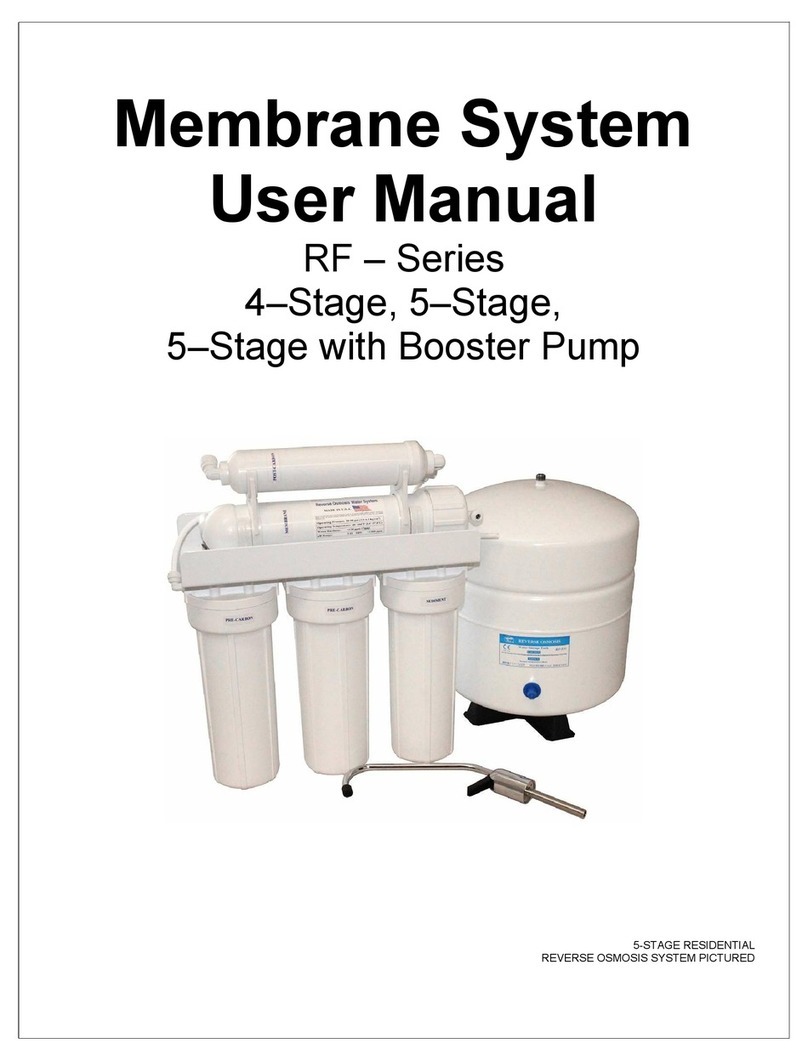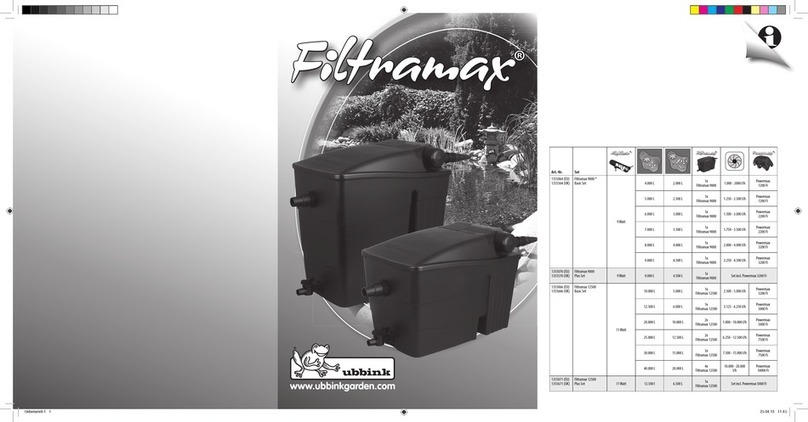6.1 Substratsäcke und Filterkorb einsetzen
Die drei befüllten Substratsäcke werden in das rote Filtergehäuse gelegt und der Filterkorb eingehängt.
Der Filterkorb muss beim Einsetzen leicht nach unten gedrückt werden, damit die umlaufende Dichtung
passgenau sitzt. Außerdem ist darauf zu achten, dass der Entnahmegriff vor Inbetriebnahme und nach
jeder Wartung im 90° Winkel zum Zulauf ausgerichtet wird, damit sich grobe Schmutzteile nicht am
Entnahmegriff verfangen.
6.2 Wartung Filterkorb
Der Filterkorb wird zur Reinigung entnommen. Der Schmutz wird entsorgt und der Korb mit Wasser
gründlich gereinigt, bis alle Maschen geöffnet sind. Es empfiehlt sich, die Reinigung alle 4 - 5 Wochen (im
Herbst durch starken Laubanfall auch öfter) vorzunehmen. Je nach Schmutzanfall oder Anschlussfläche
können sich die Reinigungsintervalle verschieben.
Der Filterkorb muss nach jeder Reinigung beim Einsetzen leicht nach unten gedrückt werden, damit die
umlaufende Dichtung passgenau sitzt. Außerdem ist darauf zu achten, dass der Entnahmegriff vor
Inbetriebnahme und nach jeder Wartung im 90° Winkel zum Zulauf ausgerichtet wird, damit sich grobe
Schmutzteile nicht am Entnahmegriff verfangen.
6.3 Wartung Filtersubstrat
Das Ersatz-Filtersubstrat (Art.Nr. 231010) muss alle 2-5 Jahre, je nach Schmutzanfall, ausgetauscht
werden. Bei jeder Wartung des Filterkorbs sind die Substratsäcke auf Verblockungen oder ähnliche
Verschmutzungen zu prüfen.
Achtung: Bei Rückstau in die Überflutungsebene, auch bei leichten
Regenereignissen, sind sowohl der Filterkorb als auch die Substratsäcke zu prüfen.
Ein Filter bzw. –Substrataustausch ist erforderlich, wenn die notwendige
Durchlässigkeit nicht mehr erzielt wird.
6.4 Entsorgung
Die im Sieb befindlichen Verschmutzungen sowie die entnommenen Substratsäcke sind entsprechend den
gesetzlichen Regelungen zu entsorgen.
